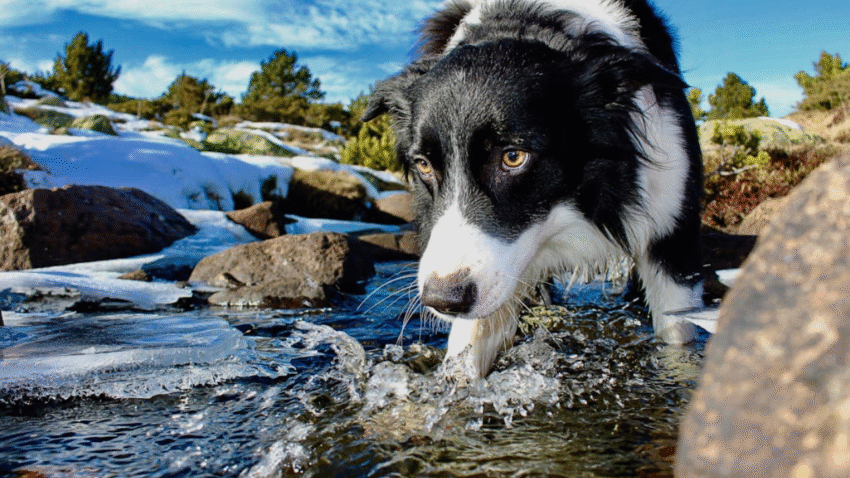Introduction
Does your dog squirm, bark, or hide every time you pull out a brush or clippers? Learning how to desensitize your dog to grooming sessions can make the experience calmer and more positive for both of you. In this guide, you’ll discover step-by-step strategies to reduce grooming anxiety, build trust, and help your dog stay clean and stress-free for life.
Why Grooming Desensitization Matters for Dogs
Grooming isn’t just about looks—it’s essential for your dog’s health. Regular brushing, bathing, nail trimming, and ear cleaning help prevent:
- Mats and tangles
- Skin infections
- Nail overgrowth and injury
- Parasite buildup
But for many dogs, grooming can be scary. Loud clippers, strange tools, restraint, and handling in sensitive areas can trigger anxiety or fear. Desensitization helps your dog:
- Stay calm during grooming
- Develop positive associations with tools and touch
- Cooperate without restraint or sedation
- Build trust with you as their caregiver
Whether your dog is a puppy or an adult, it’s never too late to help them feel safe during grooming.
Step-by-Step Guide to Desensitizing Your Dog to Grooming
1. Start with Positive Associations
Begin by making grooming tools part of your dog’s everyday environment.
How to do it:
- Place brushes, clippers, or combs near your dog during playtime
- Let them sniff and inspect each tool
- Reward them with treats and praise for being calm around the tools
Repeat this for several days without using the tools—this builds familiarity and reduces fear.
2. Touch and Handle Gently Every Day
Grooming involves handling sensitive areas, so get your dog used to being touched.
Practice handling:
- Paws and toes
- Ears and under the chin
- Tail and rear
- Belly and armpits
Use short, calm sessions and reward with treats. If your dog pulls away, stop and try again later. The goal is to build comfort, not push boundaries too quickly.
3. Break Grooming into Small, Easy Steps
Don’t start with a full grooming session right away. Break the process into tiny steps your dog can handle.
Example for brushing:
- Step 1: Show the brush → Reward
- Step 2: Touch your dog’s body with the brush → Reward
- Step 3: Do a quick stroke → Reward
- Step 4: Brush for 10 seconds → Reward
Once your dog is relaxed at one step, move to the next. Use the same method for nail clippers, ear wipes, or baths.
4. Use High-Value Treats and Rewards
Positive reinforcement is key. Choose treats your dog loves (like cheese, chicken, or peanut butter) and offer them:
- During handling
- After each successful step
- To distract during trickier parts (like brushing the tail or trimming nails)
Pairing grooming with tasty rewards builds trust and helps your dog stay focused on the positive.
5. Introduce Grooming Sounds Separately
Many dogs fear the sound of electric clippers, blow dryers, or nail grinders.
Desensitization tip:
- Turn on the tool from a distance (without using it)
- Let your dog hear it while receiving treats
- Gradually move closer over time
- Eventually, touch the tool to their body (while off), then when on
Keep sessions short and stop if your dog shows signs of fear or discomfort.
6. Practice Short, Frequent Sessions
Instead of one long grooming day, aim for 5–10 minute sessions a few times a week.
- Stop before your dog becomes restless or anxious
- End on a positive note
- Gradually increase the session length as your dog becomes more comfortable
Consistency is more effective than intensity.
7. Use a Calm, Predictable Routine
Dogs feel safer when they know what to expect. Set a grooming routine with:
- A quiet, comfortable space
- Familiar tools and treats
- Predictable steps and timing
Speak softly, move slowly, and keep the environment relaxed.
Common Mistakes to Avoid
1. Pushing Too Fast
Trying to complete a full grooming session before your dog is ready can increase fear. Go at your dog’s pace—even if that means only brushing for a few seconds at first.
2. Using Force or Restraint
Holding your dog down or forcing grooming creates negative associations. It may lead to resistance or aggression. Always use patience and reward-based methods.
3. Skipping Positive Reinforcement
Without treats or praise, your dog has no reason to enjoy grooming. Motivation and reward are essential to building cooperation.
4. Ignoring Body Language
Watch for signs of stress: panting, trembling, ears pinned back, tail tucked, or lip licking. These cues mean your dog needs a break or slower pace.
5. Waiting Until It’s a Problem
Start desensitization before mats form or nails get overgrown. Early, positive exposure prevents grooming from becoming an emergency.
Extra Tips & Recommendations
Tip 1: Use Lick Mats or Stuffed Toys During Grooming
Smear peanut butter, yogurt, or wet food onto a lick mat or Kong to keep your dog distracted while you brush or clean ears.
Tip 2: Try Desensitization After Exercise
A tired dog is often more relaxed and easier to handle. Schedule grooming after a walk or play session for best results.
Tip 3: Consider Professional Help if Needed
If your dog has extreme fear or past trauma, a positive-reinforcement dog trainer or behaviorist can help create a personalized grooming plan.
Conclusion
Desensitizing your dog to grooming isn’t an overnight fix—it’s a gradual process of building trust, comfort, and positive associations. With patience, consistency, and lots of rewards, you can turn grooming from a dreaded chore into a peaceful bonding routine your dog can actually enjoy.
🐾 Bookmark us for more training tips and stress-free dog grooming guides!
